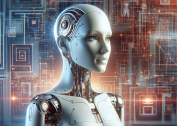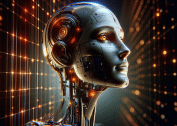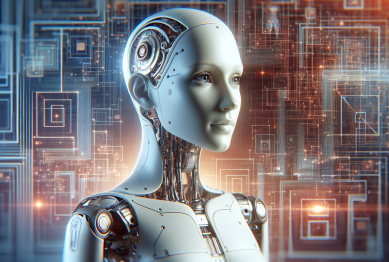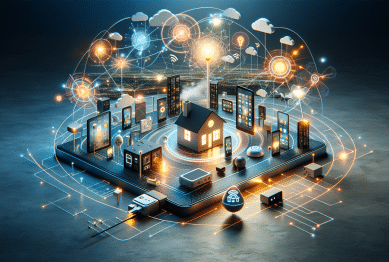Artificial intelligence is increasingly woven into daily experiences, from virtual assistants to personalized content recommendations. This guide explores how AI shapes routines, addresses common concerns, and reveals technologies operating behind the scenes. Discover practical impacts, innovations, and considerations that come with living in an AI-powered world.
The Growing Presence of Artificial Intelligence
AI, or artificial intelligence, is more than a buzzword. It’s actively transforming everyday experiences from subtle recommendations to advanced automation. Voice assistants like those found in smartphones have made information retrieval effortless, reflecting how machine learning permeates interactions. Gone are the days when AI felt like science fiction; today’s solutions work quietly in the background, shaping choices and streamlining processes. Natural language processing enables more intuitive search results while computer vision powers facial recognition for device security. The popularity of smart appliances reveals that AI is joining homes with speed. This change raises questions about dependency, trust, and usability but also inspires curiosity about where technology might benefit routines in simple ways.
As machine learning models improve, their impact grows. AI assists with everything from navigation apps charting efficient commutes to platforms recommending relevant entertainment. Whether it’s discovering a new song or managing finances, algorithms tune themselves based on usage patterns. Consider digital health: wearable devices use AI to monitor activity, send reminders, and even anticipate medical needs. The adaptability makes these tools both helpful and engaging. But it’s not just about convenience; AI systems aim to recognize individual preferences, refining experiences across devices and services. Because of this, many people encounter AI without realizing it. Background tasks such as spam filtering and network optimization quietly rely on artificial intelligence principles. These developments hint at a future of richer, more responsive technology much closer than one might think.
With widespread adoption, understanding AI’s reach becomes important. Education programs and nonprofit resources have emerged to demystify machine learning and promote digital literacy. Some universities now offer free practical AI courses to help learners grasp the concepts powering smart systems (see, for instance, offerings from edX and Coursera). These initiatives encourage a more informed public response to the technology’s opportunities and challenges. Exploring these resources showcases how AI isn’t reserved for coders or scientists but can be relevant in daily decisions. Community efforts highlight how openness and clear communication can lead to responsible and impactful use of artificial intelligence.
AI Applications You Use Without Noticing
Mention artificial intelligence and most imagine self-driving cars or advanced robotics, but countless everyday applications operate in plain sight. Email relies on sophisticated spam filters powered by AI that identify unwanted content by learning from millions of examples. Social media feeds present curated posts, adjusting what appears based on engagement and interests—this process is governed by recommendation algorithms fine-tuned over time. Even when shopping online, suggestions are customized using AI to match browsing habits and purchasing behaviors. These features simplify tasks, helping people stay organized and entertained with minimal effort. Behind the scenes, personalized search results and customer support chatbots work to resolve questions quickly and effectively.
AI is revolutionizing transportation planning. Popular navigation apps analyze real-time traffic, user speed, and historical data to direct drivers along the fastest routes—reducing congestion and saving time. Voice recognition applications, once niche, now enable multitasking across many platforms. These tools transcribe messages, translate languages on the go, and allow hands-free device use. Meanwhile, in healthcare, virtual assistants manage appointments and medication reminders, representing subtle but meaningful uses of artificial intelligence to promote wellness and convenience. Even in entertainment, algorithms sift through large libraries of content, surfacing recommendations based on unique profiles and habits. As these systems evolve, they make suggestions that often anticipate user needs before being asked.
Personal finance and banking benefit significantly from AI automation. Many financial institutions use artificial intelligence to detect fraudulent activity by tracking patterns and flagging anomalies. Budgeting apps aggregate spending, predict bills, and even offer tailored savings insights using AI-powered analysis. In retail, cashier-less checkout solutions scan purchases and process payments automatically through computer vision. These everyday applications highlight AI’s versatility—shaping consumer experiences, improving efficiency, and bolstering safety. While some worry about privacy issues, many everyday uses of artificial intelligence have become essential tools for comfort and security in modern life.
Behind the Technology: How AI Works for You
Understanding how AI functions can reduce skepticism and spark interest in its potentials. At its core, artificial intelligence relies on algorithms trained using large datasets. These learn to spot patterns, make predictions, and adapt to new inputs over time. Supervised learning, for example, involves providing labeled examples so models can “study” differences—this enables AI to correctly label new images or scans. Unsupervised learning uncovers hidden groupings within data, which can improve recommendations or segment audiences. Reinforcement learning, often used in robotics, allows AI systems to “learn” from feedback, optimizing future actions. As these approaches mature, they expand what AI can do and whom it can assist.
Most AI encountered daily depends on machine learning and deep learning techniques. Deep neural networks, structured after the human brain, break down complex problems into layers of increasingly abstract understanding. Speech recognition, for instance, analyzes sound waves and maps them to linguistic categories, allowing devices to respond accurately. Vision systems classify images and even identify emotions in photos. Data security, a key concern, motivates further research to ensure AI models respect privacy and transparency. Transparent model design and responsible data stewardship are priorities in communities focused on ethical implementation (Source: Brookings Institution). Ongoing research aims to balance technological innovation with social and individual needs.
Access to structured education in artificial intelligence has broadened considerably. Leading universities now provide introductory lectures and interactive labs online at no cost, supporting those curious about the fundamentals (see, for example, MIT OpenCourseWare and Google AI resources). These educational projects aim to help anyone—from high schoolers to professionals—understand AI system behaviors, limitations, and potential. Open guides explain terms like natural language processing, supervised learning, and computer vision so more can engage with the subject. As awareness and comprehension grow, everyday users are better prepared to navigate an intelligent digital ecosystem where artificial intelligence increasingly shapes experience.
Addressing Concerns: Privacy and AI Ethics
AI’s widespread integration brings up ethical questions, especially regarding privacy and bias. From facial recognition software on phones to digital assistants collecting data for personalization, concerns often center on how information is gathered and used. Many organizations adopt robust privacy restrictions, anonymizing information and sharing policies clearly (Source: Future of Privacy Forum). Global debates on ethics are influencing regulation and best practices, pushing the industry to ensure algorithms serve the public good and respect civil liberties. Responsible AI requires transparency in how systems operate and who benefits from their use. Stakeholders increasingly urge open communication about data handling practices as a step toward greater trust in intelligent technologies.
Algorithms can reveal or perpetuate bias, amplifying societal inequalities if not properly designed. Research institutions, nonprofit organizations, and governing bodies collaborate to audit algorithms, guiding ethical standards and accountability. Several universities publish ongoing studies examining unintended consequences of artificial intelligence, including efforts to combat algorithmic discrimination. These procedures require diverse datasets and public oversight. Industry leaders acknowledge that fairness must become a priority, spurring innovation in machine learning that actively reduces bias and misinformation. Users benefit from learning about these initiatives, which make AI systems safer, more equitable, and broadly beneficial.
In response to ethical challenges, many companies and research groups commit to publishing principles and frameworks for trustworthy artificial intelligence (Source: Partnership on AI). Independent organizations support educational campaigns to promote critical engagement with digital tools. There are growing efforts to establish AI literacy programs in community centers, aiming to demystify how algorithms affect daily life. These educational materials cover personal data protection and provide resources for understanding user rights and avenues for recourse. While technical advancements are exciting, keeping discussions about values central to innovation ensures technology remains a positive force in society.
AI-Driven Innovation: Looking to the Future
AI innovation is advancing rapidly in areas like health, sustainability, and education. In medicine, artificial intelligence speeds the analysis of diagnostic images, supporting physicians with more precise results, and even accelerating the discovery of new drugs (Source: NIH). Urban planning now utilizes machine learning to optimize traffic flow, manage waste, and improve energy use. Consider agriculture—AI-powered sensors monitor crops and soil, enhancing yields and resource conservation. By supporting smarter resource management, artificial intelligence helps address urgent global challenges ranging from healthcare access to environmental stewardship.
AI’s predictive power can transform education. Adaptive learning platforms personalize instruction so that students advance at their own pace, while early-warning systems spot when learners may need extra help. In the workplace, machine learning tools can identify skills gaps, recommend training modules, and improve collaboration. As industries adapt, professionals able to leverage AI-powered insights can navigate changing landscapes with confidence. Developing digital competence and curiosity about technology ensures individuals are well-placed to thrive. Continuing expansion of free course offerings and community workshops fosters these skills—not just for specialists, but for the public at large.
Looking ahead, responsible innovation remains essential. Organizations across disciplines are forming partnerships to ensure artificial intelligence aligns with ethical standards while enabling fresh solutions to longstanding problems (Source: OECD). Collaboration between academia, industry leaders, and the public strengthens oversight and fuels creative approaches to technology. Flexible, inclusive education enables broader participation in directing where AI goes next. As artificial intelligence continues to evolve, staying informed ensures everyone can enjoy the benefits and contribute meaningfully to the conversation about its future impact.
Navigating Life With AI: Everyday Tips and Insights
To get the most out of AI in daily routines, staying aware of available tools and setting personal boundaries are helpful practices. Many devices and online services offer built-in privacy settings—reviewing them regularly can reduce exposure to unnecessary data sharing. Familiarizing oneself with platform transparency reports often reveals how AI-driven features operate behind the scenes. Learning about these aspects supports informed decisions and enhances safety while enjoying the benefits automation brings. Seeking out self-paced or interactive guides keeps skills current as technologies update and evolve.
People increasingly use AI-powered solutions in new areas, from home automation to educational platforms. Smart thermostats adjust comfort levels while regulating energy usage, and virtual assistants help manage calendars and reminders. Services like personalized news digests and real-time language translation break down communication barriers, broadening access to global perspectives. Experimenting with these offerings lets individuals set comfort levels with automation and refine user experiences. Organizations frequently publish knowledge bases to assist users with troubleshooting and maximizing feature utility.
Community-driven knowledge sharing can help everyone benefit from artificial intelligence safely. Participating in digital literacy events, following updates from reliable sources, or joining online forums creates opportunities for collaborative learning. As technologies advance, so does the importance of critically assessing sources and advocating for practices that prioritize well-being and privacy. Staying active in the conversation means artificial intelligence remains a public good—accessible, understandable, and adaptable to evolving needs.
References
1. National Institutes of Health. (2023). Artificial Intelligence in Medicine. Retrieved from https://www.nih.gov/news-events/nih-research-matters/artificial-intelligence-medicine
2. Brookings Institution. (2022). Building ethical and trustworthy AI. Retrieved from https://www.brookings.edu/research/building-ethical-trustworthy-ai/
3. Future of Privacy Forum. (2023). Artificial Intelligence and Privacy. Retrieved from https://fpf.org/issues/ai/artificial-intelligence-and-privacy/
4. OECD. (2023). Principles on Artificial Intelligence. Retrieved from https://www.oecd.org/going-digital/ai/principles/
5. Partnership on AI. (2024). About The Partnership on AI. Retrieved from https://partnershiponai.org/about/
6. Coursera. (2024). Introduction to Artificial Intelligence. Retrieved from https://www.coursera.org/learn/ai-for-everyone









